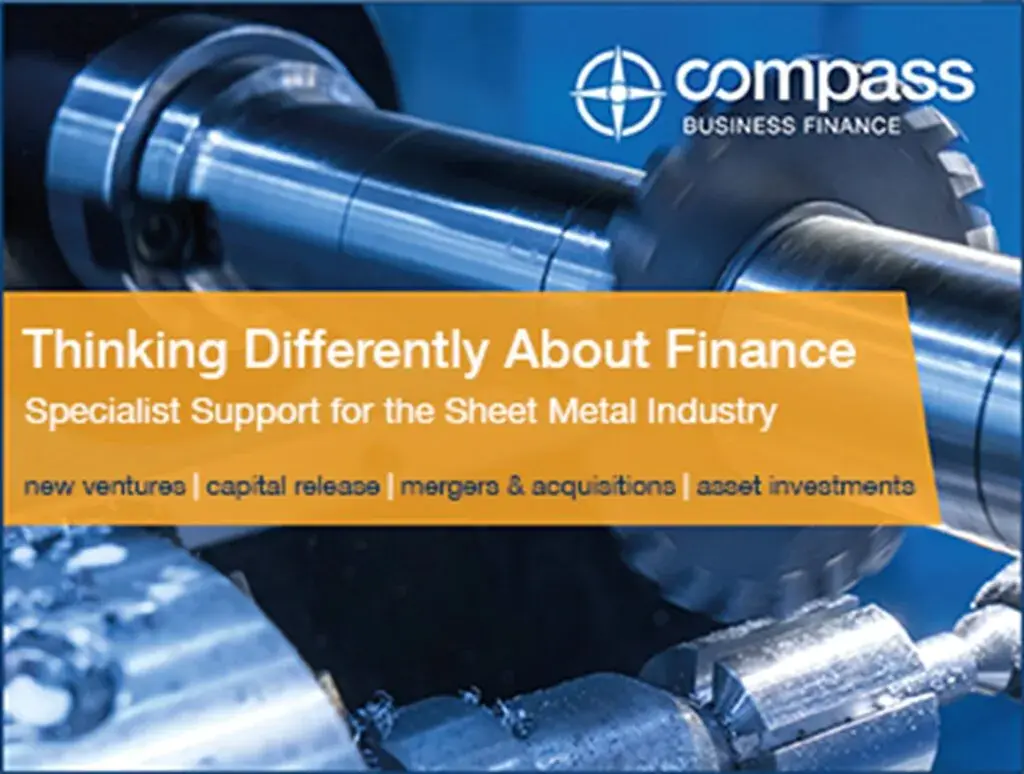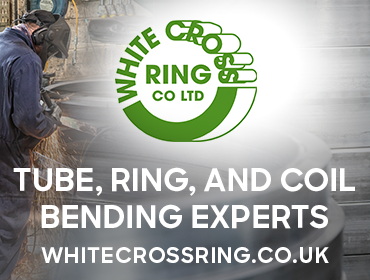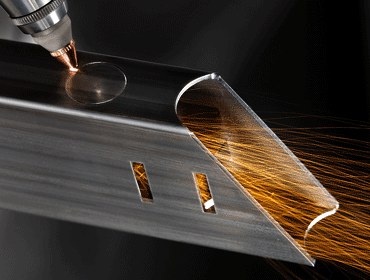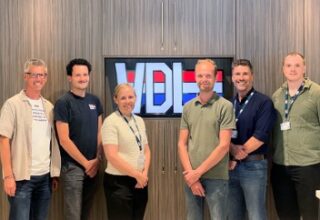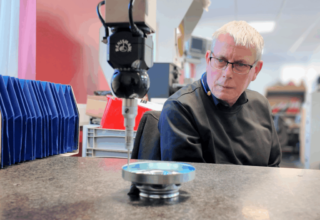
Alroys Sheet Metal helps explain….Sheet metal forming is the shaping of metal parts by applying forces, such as tension and compression, to make the desired shape.
Choice of processes depends on the type of metal being used, the size and shape of the part being created, and the amount of metal involved. Consequently, high tooling and labour costs mean many of the processes are best suited for high production runs in order to achieve efficiencies.
Sheet metal forming processes
Bending
Bending is a process that produces a ‘V’, ‘U’ or channel shape along a straight axis in ductile* materials. For example, boxes for electrical enclosures and ductwork.
*Ductility is defined as the degree to which a material can sustain plastic deformation under tensile stress before failure.
Cold working
Cold working is any process in which metal is shaped below its recrystallisation temperature, usually ambient. Cold forming techniques are usually classified into four major groups: squeezing, bending, drawing, and shearing. Unlike hot working, cold working causes the crystal grains and inclusions to distort following the flow of the metal. This might result in the metal becoming harder, stiffer and stronger but also less plastic causing cracks in the piece. The possible uses of cold forming are extremely varied, including complex folded shapes, metal tubes, and screw heads and threads.
Drawing
Sheet metal drawing is defined as a plastic deformation over a curved axis. It’s a process that uses tensile forces to elongate the metal. As the material is drawn (pulled), it stretches and becomes thinner, achieving a specific shape and thickness.
Explosive forming
Here, an explosive charge is used instead of a punch or press. This is for individual jobs, producing one product at a time, and with a long setup time. It’s ideal for materials where a press setup would be prohibitively large and expensive. Alternatively, where an unusually high pressure is required.
Extrusion
Extrusion creates objects of a fixed cross-sectional profile by pushing material through a die* of the desired shape. Its two main advantages are the ability to create very complex cross-sections, and work on materials that are brittle. Also, it creates an excellent surface finish and gives considerable freedom of form in the design process. Drawing is a similar process, using the tensile strength of the material to pull it through the die.
*A die is a specialised machine tool to cut and or form material to a specified shape or profile.
Forging
Forging shapes the metal with hammers powered by compressed air, electricity, hydraulics or steam. Compared to other manufacturing methods, metal forging produces some of the sturdiest manufactured parts available. As metal is heated and pressed, minor cracks are sealed, and any empty spaces in the metal are closed up.
The hot forging process also breaks up impurities in the metal and redistributes such material across the metalwork. This vastly reduces inclusions in the forged part. Another way that forging strengthens metal is by alternating its grain structure (flow) as it deforms. Through forging, a favourable grain structure can be created, making the forged metal sturdier.
*Inclusions are compound materials inside steel throughout manufacturing that cause stress points in the final forged parts.
Hot working
Hot working is where metals are plastically deformed above their recrystallisation temperature. These high temperatures allow the metal to elongate, or stretch, to a much greater degree without rupture than is possible in cold and warm forming methods. In addition, finer detail can be achieved and with less overall force than with other forming processes.
Magnetic pulse forming
With magnetic pulse forming, a special coil is placed near the workpiece, replacing the pusher in traditional sheet metal forming. When the system releases its intense magnetic pulse, the coil generates a magnetic field which in turn accelerates the workpiece to hyper speed and onto the die. The magnetic pulse and the extreme deformation speed increases formability without affecting the native strength of the material.
Peening
Peening is the process of working a metal’s surface to improve its material properties, usually by mechanical means, such as hammer blows or by blasting with shot.
Roll forming
Roll forming is the continuous bending of a long strip of sheet metal. This is typically coiled steel into a cross-section (profile). The strip passes through sets of rolls mounted onto consecutive stands, each set performing an incremental part of the bend, until the desired cross-section is obtained. Roll forming is ideal for producing constant profile parts in long lengths.
Rubber pad forming
Rubber pad forming is a process whereby sheet metal is pressed between a die and a rubber block made of polyurethane. The rubber pads ensure that a polished or sharpened surface remains undamaged. They can have a general purpose shape, like a membrane, or they can be machined in the shape of die or punch. Under pressure, the rubber and sheet metal are driven into the die conforming to its shape and forming the part.
Shearing
Shearing is also known as die cutting. It is a process that cuts metal without the formation of chips or the use of burning or melting.
Spin forming
A process by which a disc or tube of metal is rotated at high speed and formed into an axially symmetric part. That means its appearance is unchanged if rotated around an axis.
Superplastic forming
Superplastic forming creates precise and complex components out of superplastic materials, such as some fine-grained metals and ceramics. It forms components with double curvature and smooth contours from a single sheet in one operation. Exceptional dimensional accuracy and surface finish can be achieved with none of the ‘spring back’ associated with cold forming techniques.



